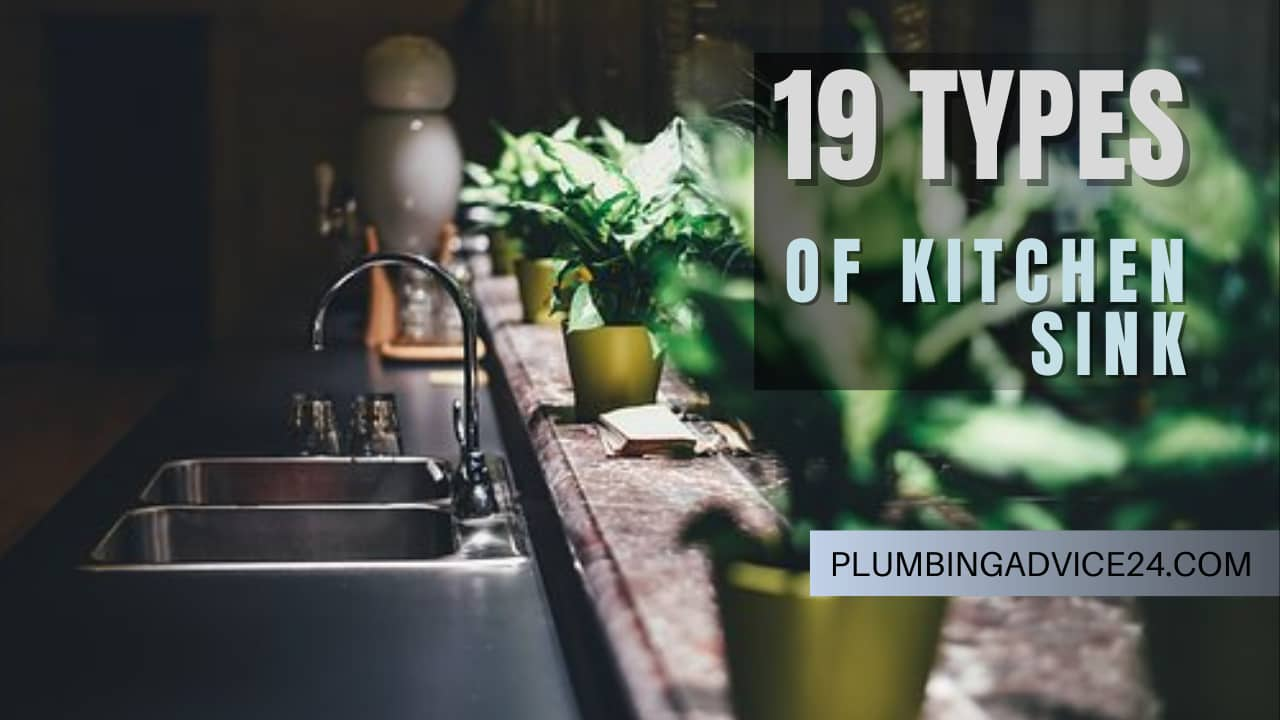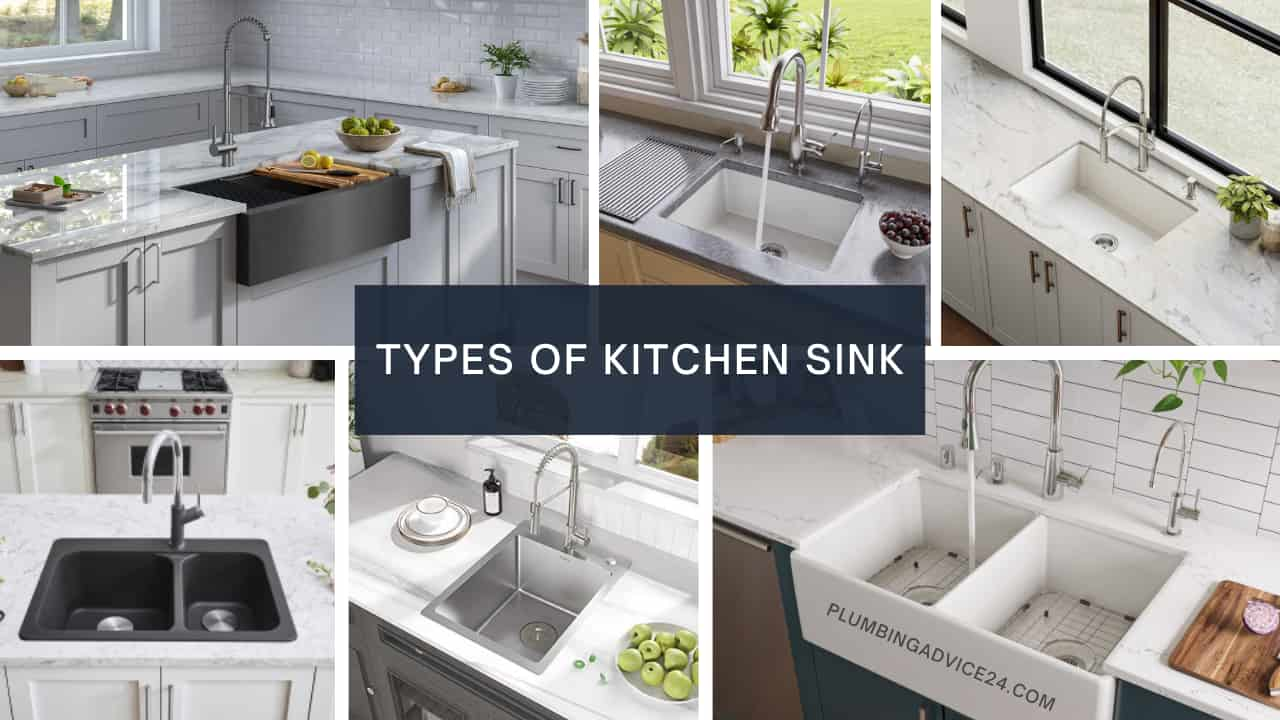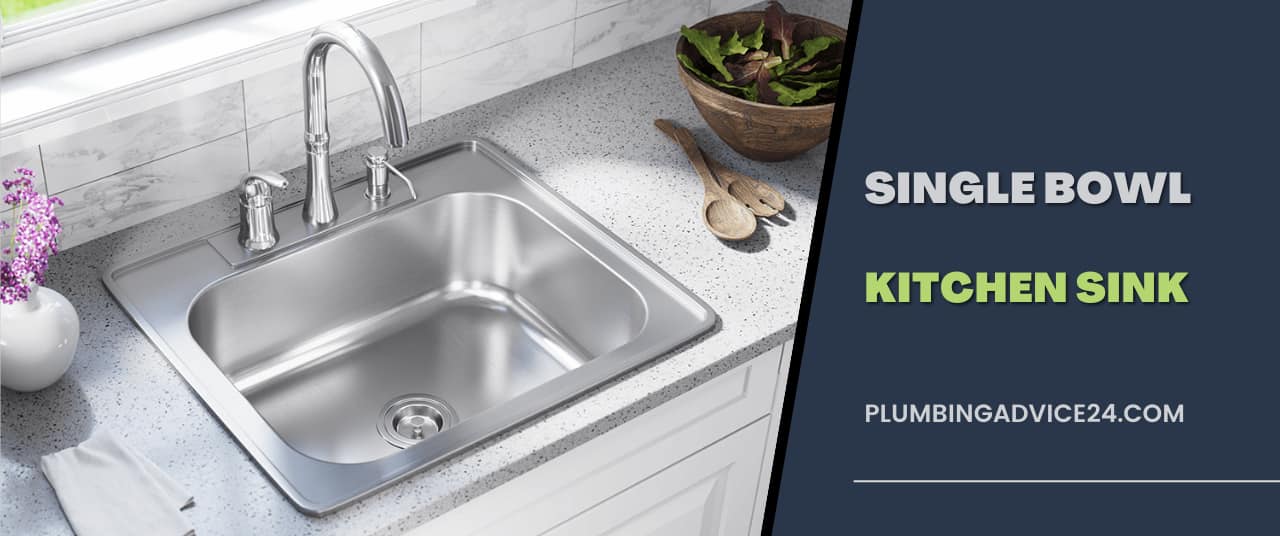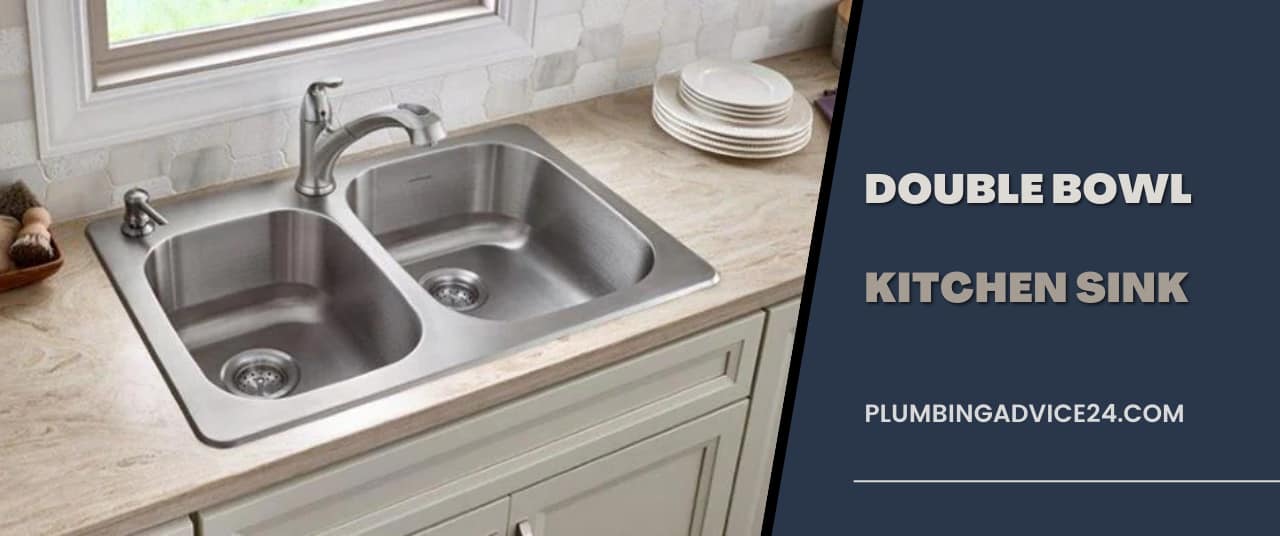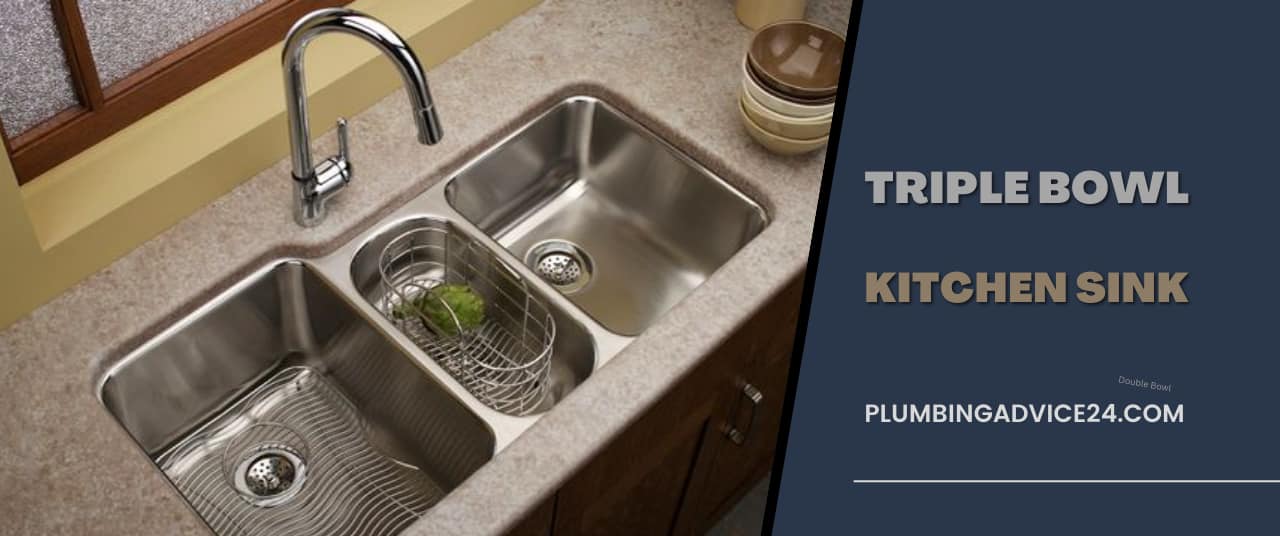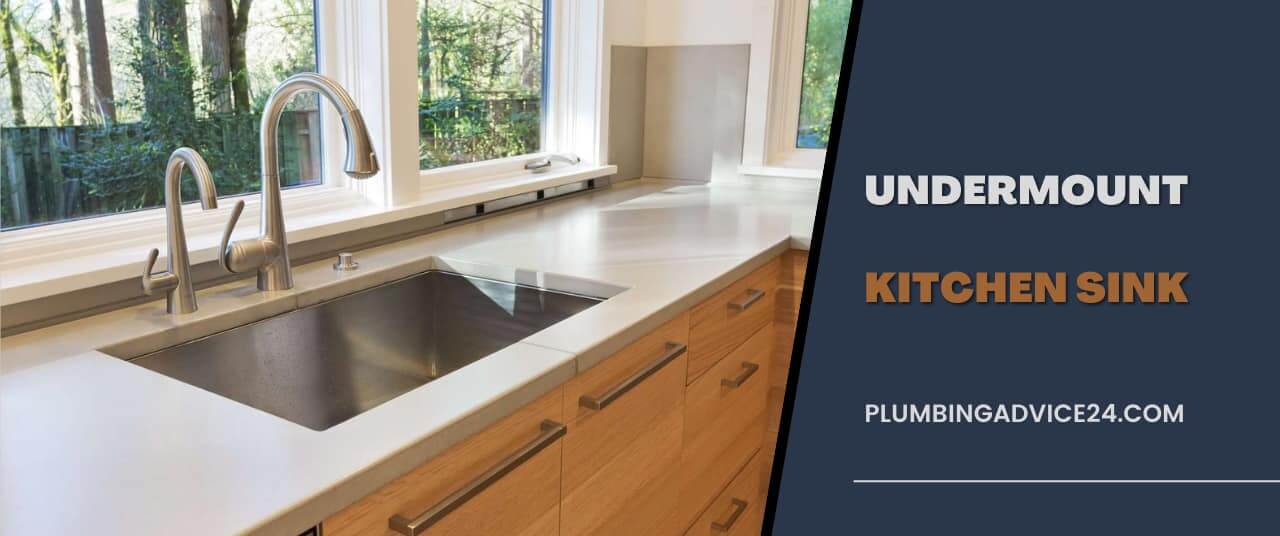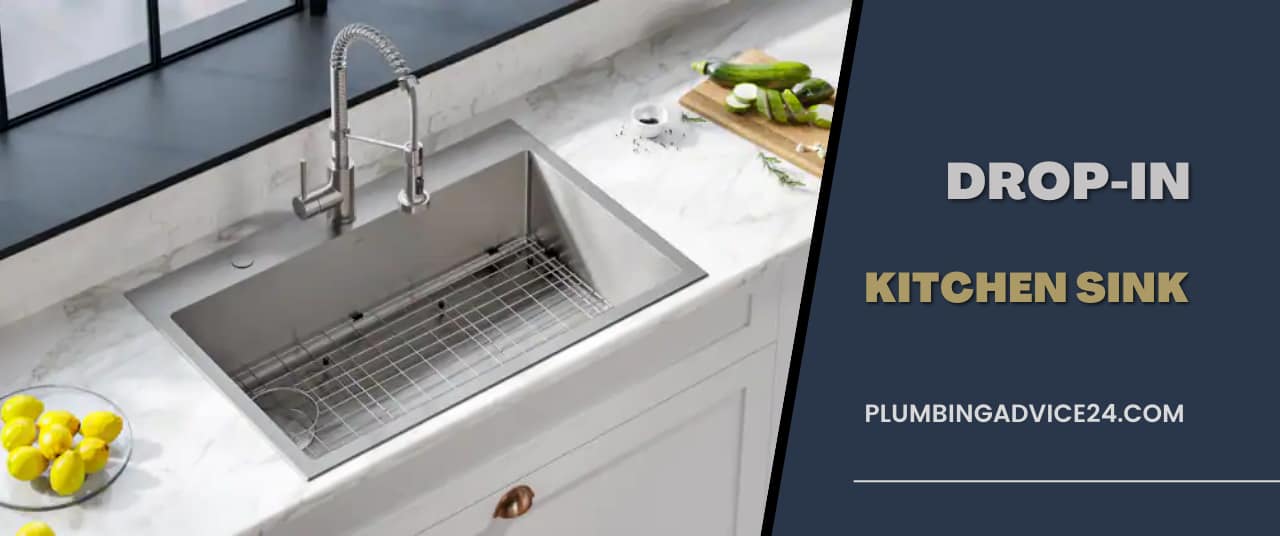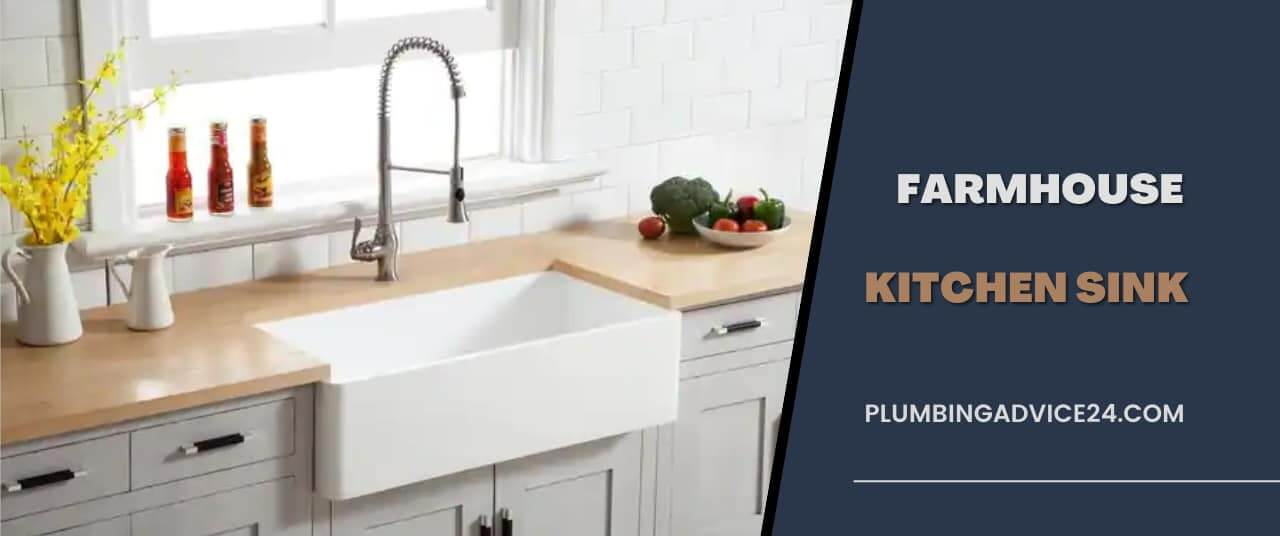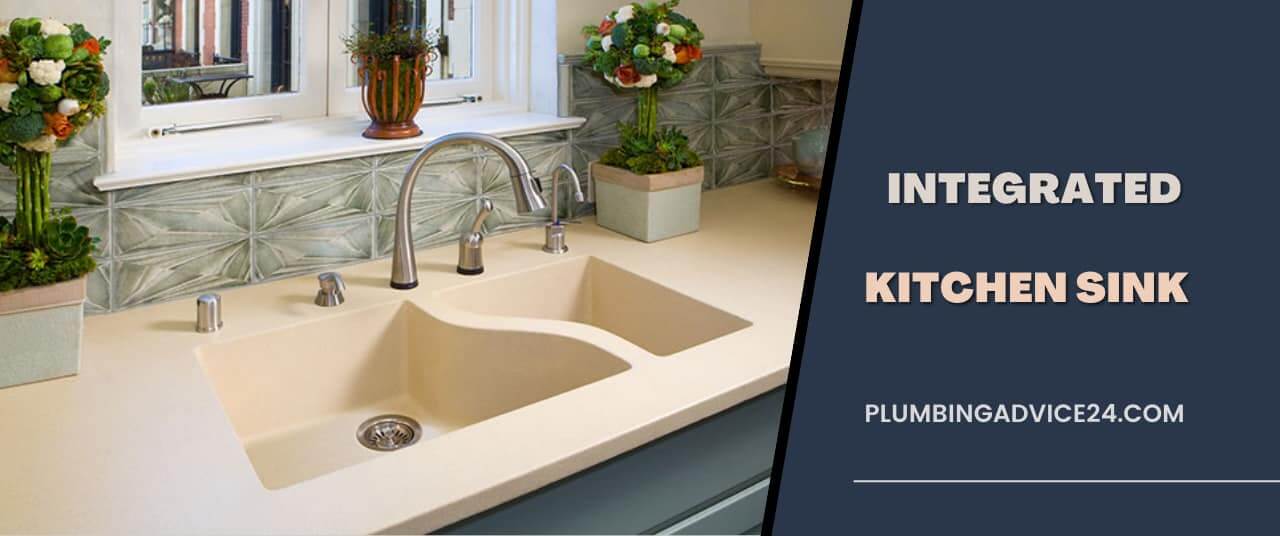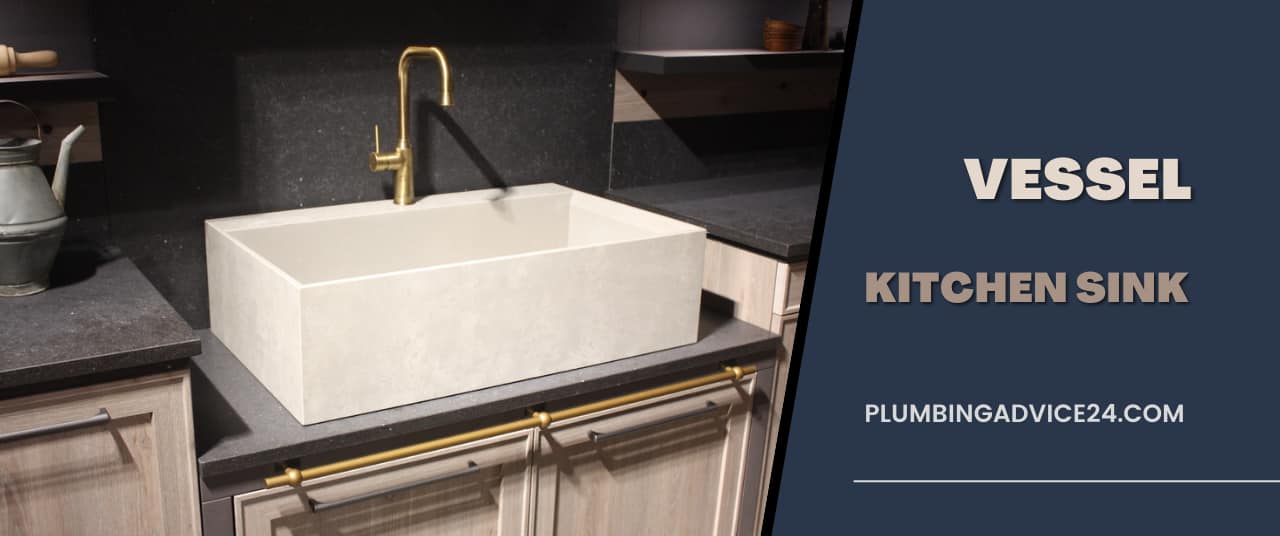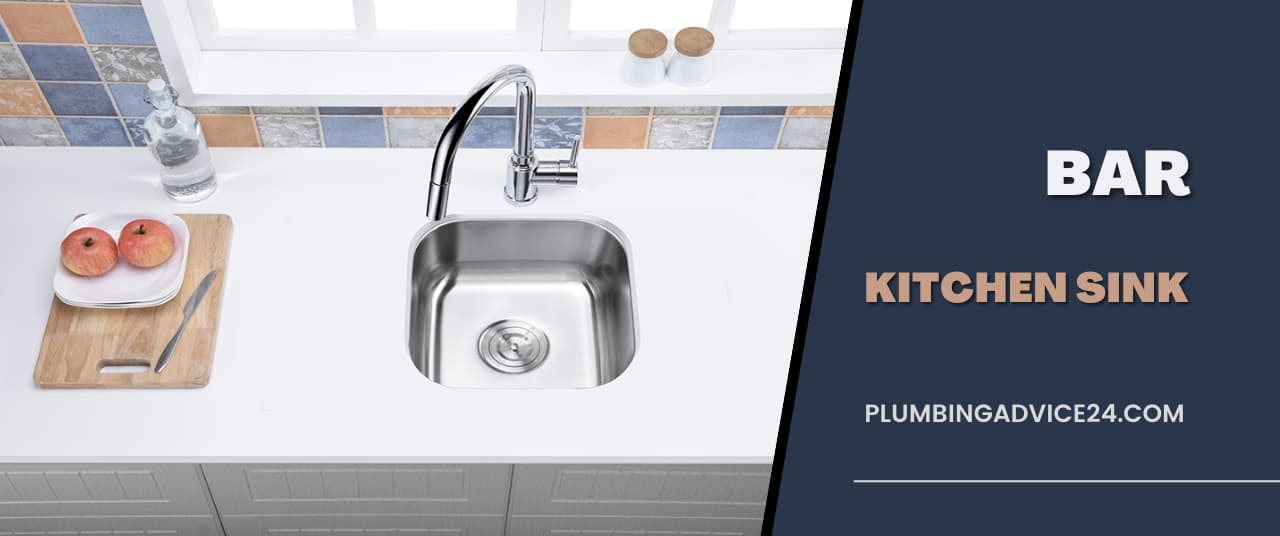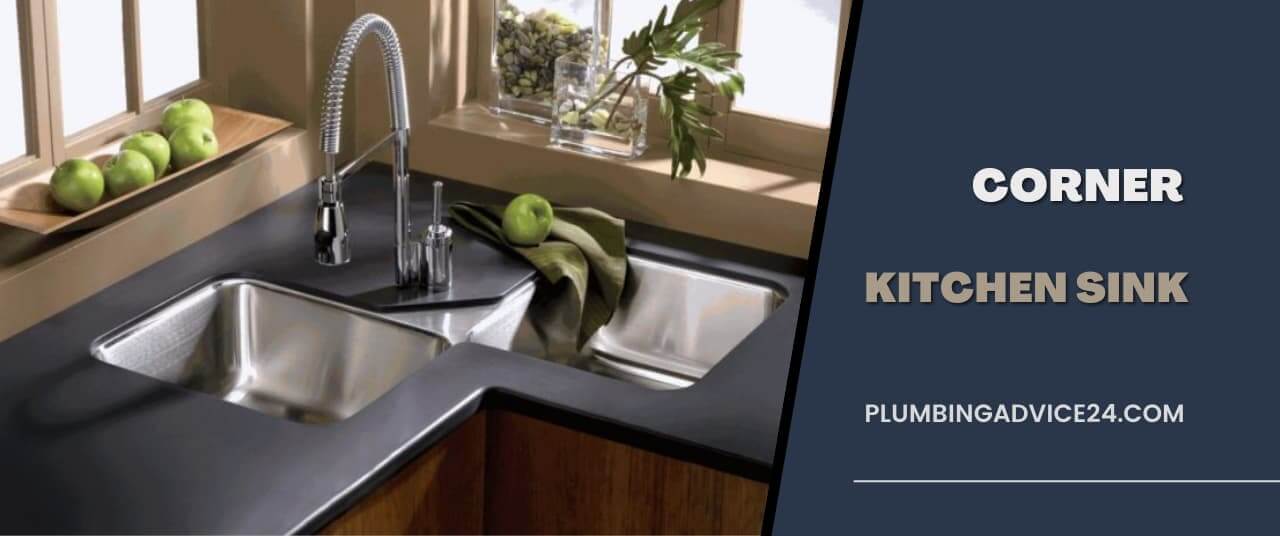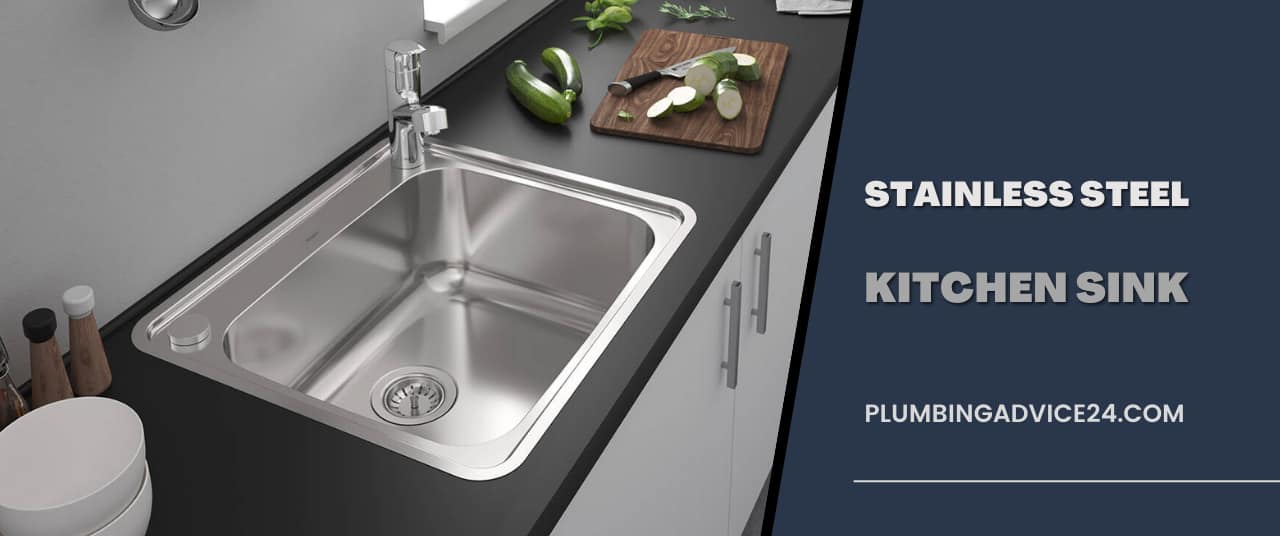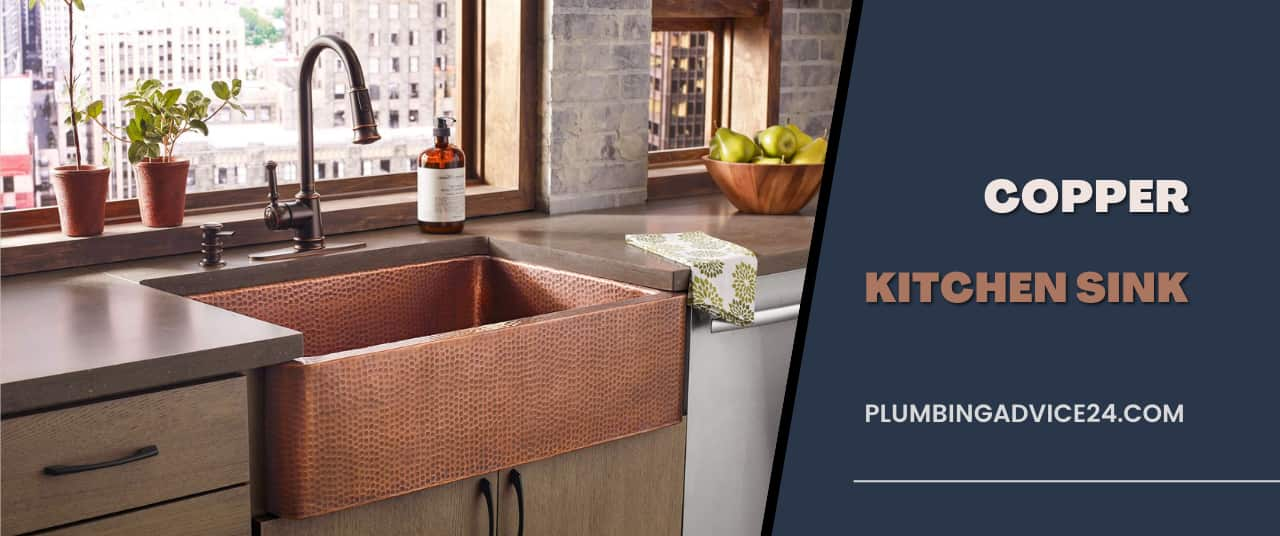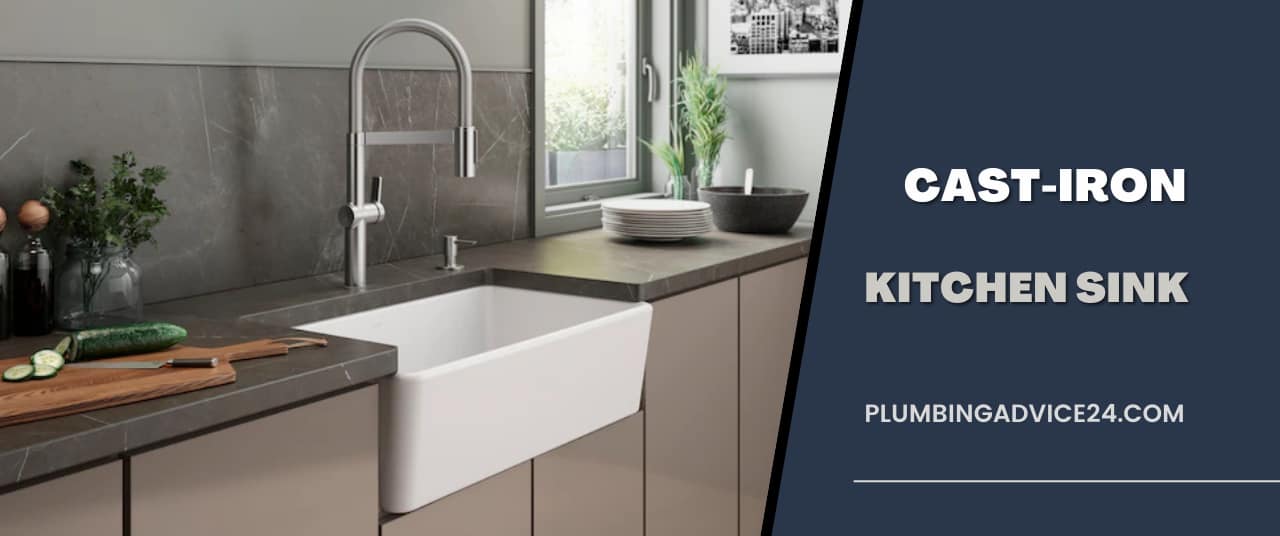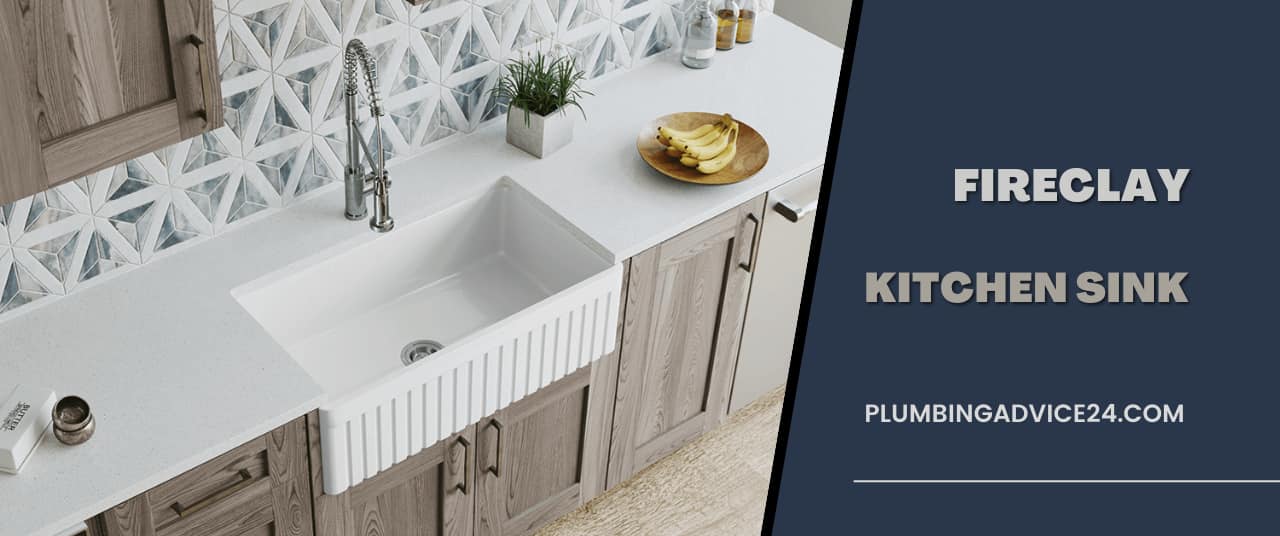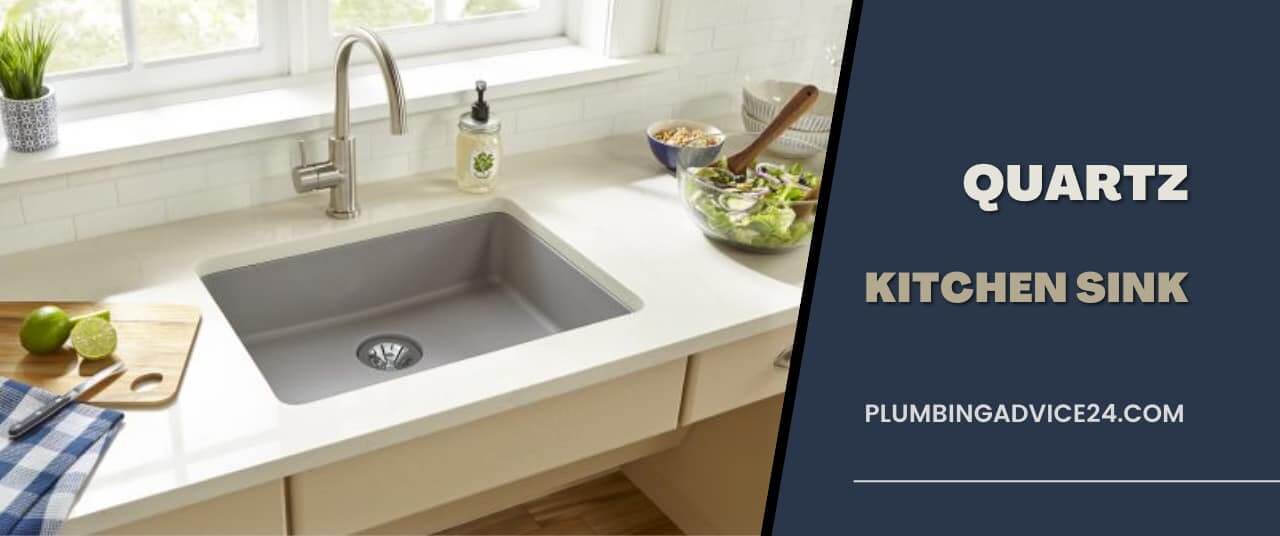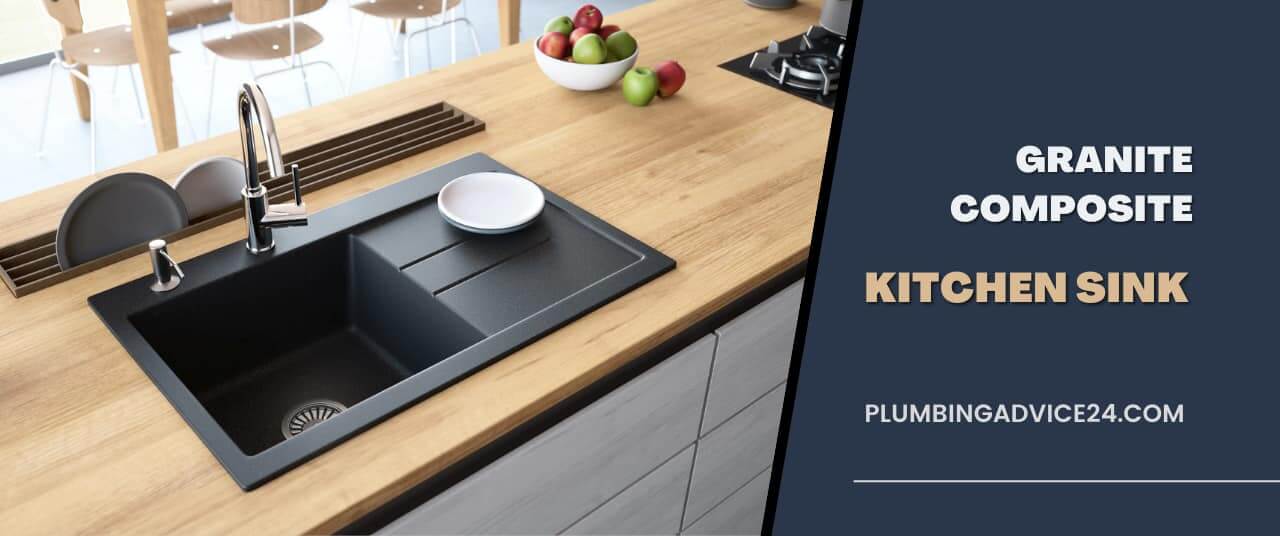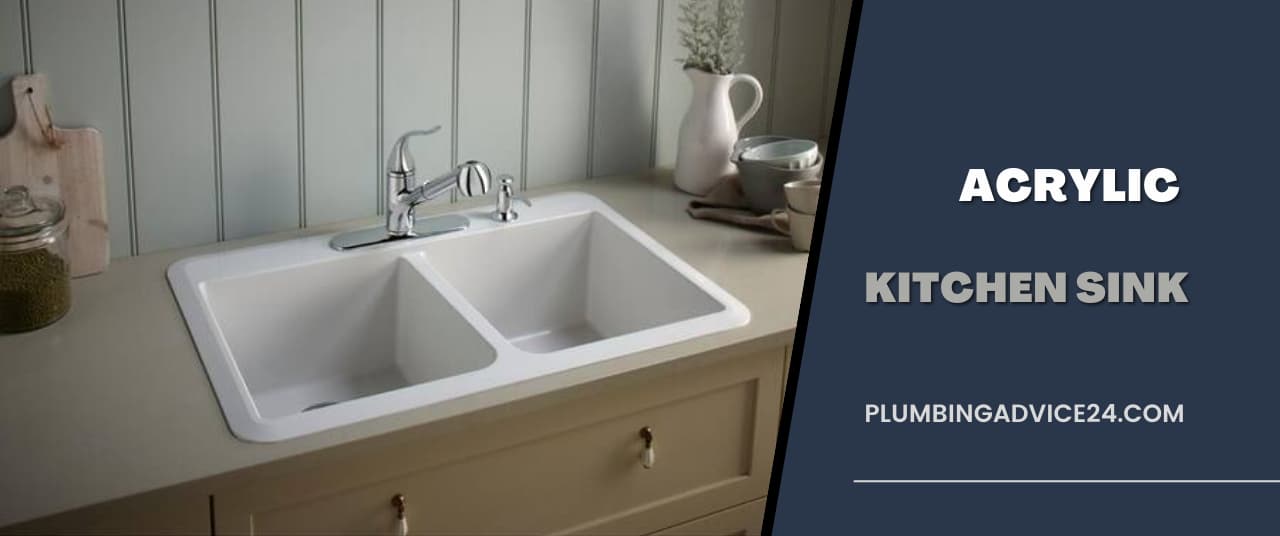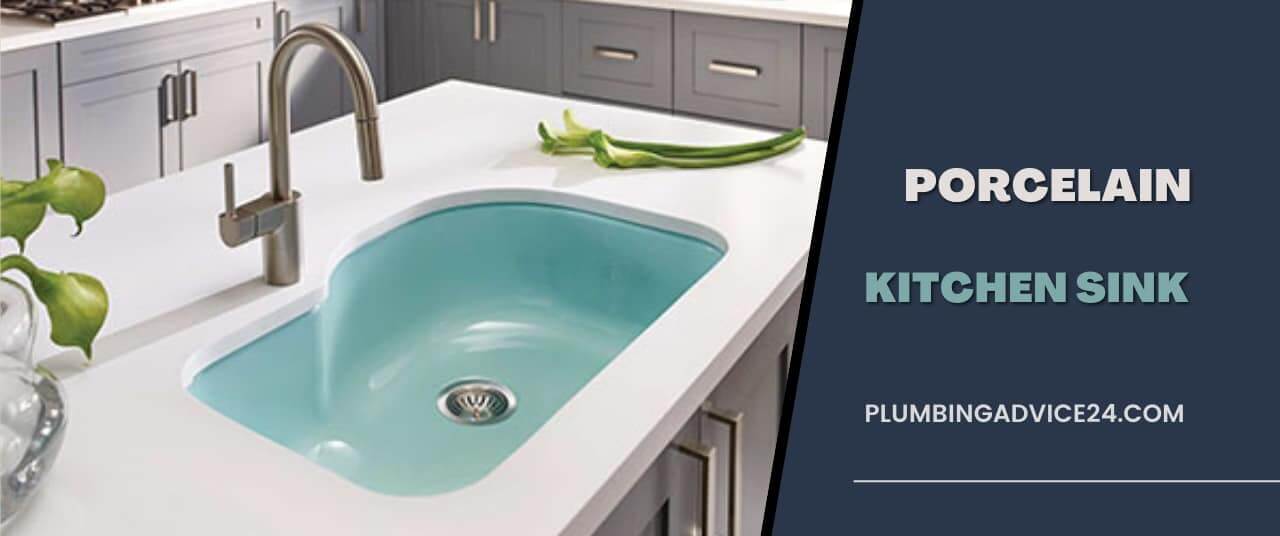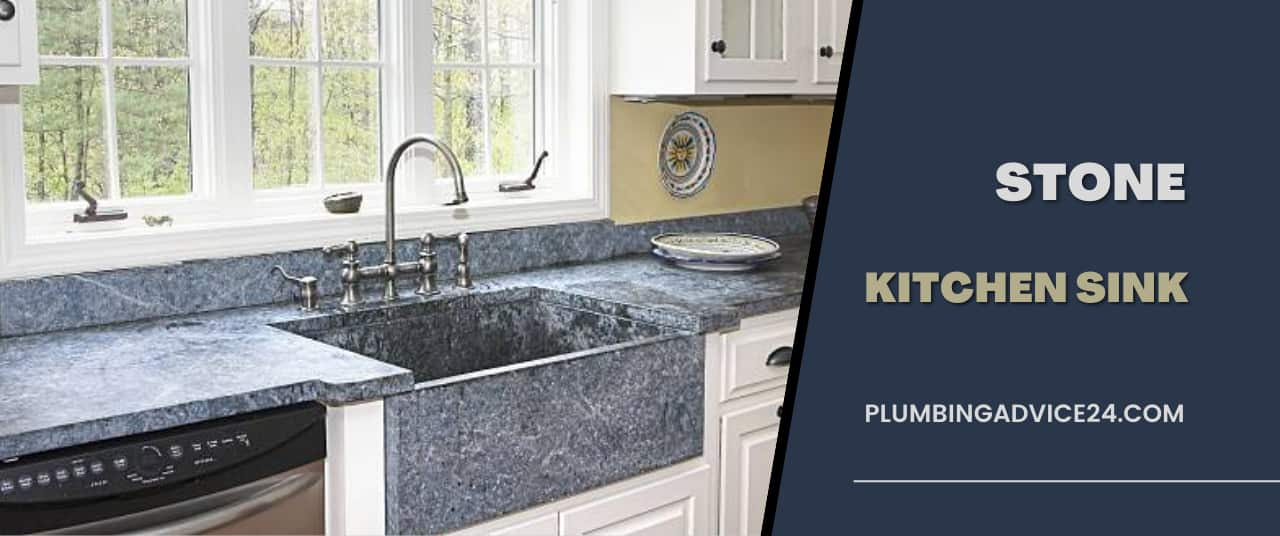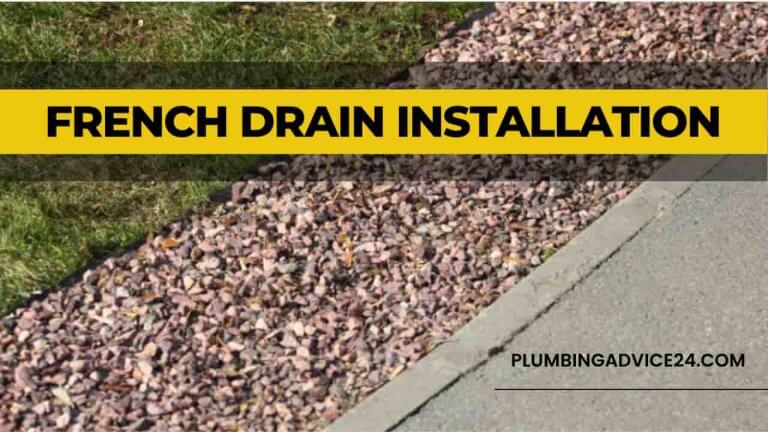19 Different Types of Kitchen Sinks
Whether you’re making some small kitchen improvements or considering a complete kitchen remodel, finding the perfect sink for you is important! The kitchen sink is one of the most used spaces in your kitchen and a crucial focal point of the overall design, so you need to find the best sink material that is not only beautiful and stylish but also matches your family’s needs for durability and maintenance. In this article, we will discuss the different types of kitchen sinks, which will provide you with information on how to find the right sink.
Types of Kitchen Sinks
A kitchen sink is a bowl-shaped plumbing fixture that people commonly use for washing dishes, washing hands, etc. They have faucets (faucets) that provide hot and cold water and come with a spray feature for quick rinsing. We have categorized the types of kitchen sinks into three different types for easy understanding. Types of kitchen sinks by basin or bowl configuration, style, and materials.
Types of Kitchen Sinks: by Basin Configuration
How many bowls you choose for your new kitchen sink is your personal choice, but the right number of bowls will help you get your kitchen chores done faster. Determine how many bowls you need in your sink after considering the amount of cooking in your home, the size of your family, and how you wash your dishes. There are mainly one, two, or three-bowl series available in the market for kitchen sinks.
Single Basin Kitchen Sink / Single Bowl Kitchen Sink
A single basin or single bowl kitchen sink is perfect for small kitchens or limited counter space. These types of kitchen sinks save space by providing more sink space and storage under the counter. A single deep bowl helps you wash larger dishes while keeping dishes and splatter inside the sink. This type of sink is ideal for small spaces, space cleaning, and soaking pots and pans.
Single basin kitchen sink pros and cons are as below:
Advantages of Single Basin Kitchen Sink
- Single bowl sinks cost less and are easier to install since there is only one water drain to connect to get the sink working.
- A large sink takes up less counter space, making it ideal for small kitchens.
- A large basin in this sink makes it easy to clean large cookware, such as large pots, pans, and sheet pans large enough to wash.
- It is still versatile; If you want a portion of hot, soapy water, you can place a makeshift dish basin in the sink.
- A garbage disposal can be installed to catch all food waste in the sink.
- It is easier to clean and maintain single-bowl sinks.
Disadvantages of Single Basin Kitchen Sink
- Single-bowl sinks may use more water and detergent when washing dishes.
- Single bowl sinks will need a separate space for drying. The built-in dryer may require a lot of counter space.
- There is no option of separating dirty and clean dishes, nor allows you need to separate thawing meat to avoid contamination.
- Single bowl sinks are less versatile since it is harder to wash, rinse and drain dishes and cutlery.
- You don’t have the option of separating dirty and clean dishes.
- With a single-basin sink, there’s no way to separate contaminated dishes (like those used for raw meat) from other dishes.
Double Basin Kitchen Sink / Double Bowl Kitchen Sink
A double-basin or double-bowl kitchen sink is ideal if you’re looking for easy multitasking. A double bowl sink consists of two basins separated by a wall or divider, which streamlines workflow and helps provide the convenience of keeping your garbage disposal accessible.
Double basin sinks are often described in percentages based on their bowl volume. A 50/50 sink will have equal-sized bowls (same on both sides). Or a 60/40 sink will have a larger bowl on the left and a slightly smaller bowl on the right. Double sinks work best in kitchens with plenty of counter space.
A double kitchen sink is designed to allow soaking on one side and rinsing or preparing on the other side. You can use one bowl to defrost food while the other can be used to scrub dirty dishes or do other chores.
These types of kitchen sinks are a perfect choice to help you complete your daily kitchen tasks efficiently and make your busy life easier.
Double basin kitchen sink pros and cons are as below:
Advantages of Double Basin Kitchen Sink
- A double-bowl kitchen sink can soak dishes in one bowl while washing dishes in the other.
- These kitchen sinks are designed for multitasking, allowing you to fill one side of the sink with hot water to wash dishes so you can rinse them on the other side.
- It can separate dirty (raw meat) dishes from any meal preparation.
- Can distinguish heavy metal clumsy dishes from delicate glassware.
- A drying rack can be added to a bowl to dry air dishes (this removes dishes from air drying on your counter).
Disadvantages of Double Basin Kitchen Sink
- A double basin sink requires more counter space, which also takes up your under-counter storage space. So it could not be better for small kitchens.
- A double bowl sink requires a double drain pipe. And it also becomes difficult to install.
- Large pots and pans can be difficult to hand wash because the separator gets in the way.
- They usually are deeper than a single bowl, so it’s more challenging to ‘hide’ dishes.
- The waste disposal is only on one side so that food particles can get stuck in the other bowl drain.
- Double-bowl kitchen sinks are generally more expensive than single-bowl sinks.
Triple Basin Kitchen Sink / Triple Bowl Kitchen Sink
If you have a lot of space and want to get your kitchen work done quickly, the triple-basin kitchen sink is a good option. When your kitchen sink is a busy workstation, the triple sink gives you great efficiency by reducing the time required to get the job done.
Triple-basin kitchen sinks are similar to the double-basin style, with the addition of a small basin that’s great for prep work that won’t interfere with whatever else you’re doing (soaking, drying, etc.) in the two larger bowls.
The bowl on one side of the sink can be used for soaking baking pans or drying dishes, while the bowl on the other side of the sink can be used for general purposes. The center bowl can be dedicated to food scraps and other lighter tasks such as washing your hands, draining the colander, or rinsing flatware. With the help of this, you can organize everything.
A triple sink is a perfect choice for those who want to quickly multitask kitchen duties like washing fruits and vegetables, preparing food, washing dishes, air drying, clearing tables, and sending scraps to the garbage disposal.
Triple basin kitchen sink pros and cons are as below:
Advantages of Triple Basin Kitchen Sink
- The side sink bowls in triple basin sinks are wide enough to have good capacity.
- If one of the big bowls has dirty dishes, you still have two other bowls free to do other things.
- You can keep the dishrack in one sink bowl, where it does not interfere with other work, and clean dishes do not get dirty or spoiled.
- A triple basin sink can separate heavy metal clumsy dishes from delicate glassware.
- A drying rack can be added to the bowl to dry air dishes (this eliminates air drying of dishes on your counter).
Disadvantages of Triple Basin Kitchen Sink
- Triple basin sinks are usually much larger than single and double bowl sinks and require a large space to integrate them into the kitchen comfortably.
- Depending on the overall width of the triple basin sink, bowl sizes may be smaller for the largest pans.
- Feature bowls are too small when the overall width of the sink is small.
- Triple basin sinks are not available in as many styles and materials as double and single kitchen sinks.
- Triple basin sinks are slightly more expensive than single and double sinks in the same line.
Must Read: What Is Plumbing Trap | 15 Different Types of Plumbing Traps
Types of Kitchen Sinks: by Style
After you’ve decided on the size of your new kitchen sink, it’s time to explore the style options available. The following information will help you find a design for your kitchen sink that will make your kitchen look beautiful.
Different styles of kitchen sinks are as above:
Undermount Kitchen Sink
Designed for a high-end look, under-mount kitchen sinks make your kitchen look neat and tidy while also increasing the depth of the basin. As an added bonus, with no exposed mounting deck, this sink saves counter space while preventing trapped debris, which means less cleanup.
The under-mount kitchen sink attaches directly to the underside of the countertop material for a flush installation, with a seamless transition from sink to counter. Undermount kitchen sink With a sleek contemporary look, this installation type makes cleaning your kitchen easy.
The under-mount kitchen sink looks very attractive. Whether buying new countertops or replacing an old sink that is on its way to becoming empty after many years of service, there are many good reasons to upgrade to an under-counter sink. With so many to choose from, these under-mount sinks offer stylish options for every kitchen.
Undermount kitchen sink pros and cons are as below:
Advantages of Undermount Kitchen Sink
- Undermount sinks are versatile and customizable, which is attractive to homeowners.
- Undermount sinks have no visible rim; countertops can form a continuous line, which gives them an attractive look.
- The under-mount sink sits below the countertop, with the edge of the sink hidden. Not only does this create a sleek, seamless look to your kitchen, but it also prevents crumbs, moisture, and other items from catching on while you’re cleaning.
- Since the undermount sink has no visible edges, it doesn’t have to sacrifice any counter space. Instead of leaving a little extra space for the edge, you lose the same space that the sink takes up, which can also increase the resale value of your home.
- Countertops are easier to keep clean because you can clean debris from the counter directly into the sink.
Disadvantages of Undermount Kitchen Sink
- Undermount kitchen sinks don’t take up space above the counter; they sit below a drop-in sink. Which often also takes up more cabinet space below.
- Undermount sinks are heavy. They need more support to help carry the weight. They also need more solid countertops that don’t suffer as easily from water damage. This often makes them more expensive sinks than other options.
- An under-mount sink requires a custom hole to be cut in the counter, making it more difficult to replace the sink or replace it later.
- An under-mount kitchen sink is more difficult to install, requiring a professional installation.
Drop-In Kitchen Sink
Drop-in Kitchen sinks are one of the most popular sink types. It is also often called a top-mount sink or a self-rimming sink. Super easy to install, drop-in kitchen sinks work with almost every style of countertop and can be replaced without disturbing the countertop or relocating the plumbing.
A distinctive feature of a drop-in sink is its surrounding rim, which is slightly wider than the sink opening on the countertop. When installed, it rests on top of the rim counter.
Under the counter, additional mounts screw tightly to the underside. The slight lip where the rim meets the counter is then sealed with silicone caulk to provide a barrier to water and dirt. Drop-in sinks come in shapes, sizes, and configurations to accommodate kitchens of every size.
Drop-in kitchen sink pros and cons are as below:
Advantages of Drop-In Kitchen Sink
- Drop-in Kitchen sinks have always been a popular choice for designing kitchen spaces. It is a simple solution and can fit almost any style preference while meeting practical needs.
- Drop-in sinks are easy to install, with many homeowners doing it themselves, which saves a lot of money compared to hiring professional help.
- Drop-in sinks are often standard sizes, and if you choose to replace your sink later, you can remove and install the drop-in sink yourself.
- A drop-in kitchen sink provides a barrier to prevent water damage to surrounding countertops.
- Drop-in sinks are available in various materials that allow homeowners to spend as little or as much as they want on their sinks.
Disadvantages of Drop-In Kitchen Sink
- The rim of the overmount kitchen sink protrudes, limiting the overall counter space available. You’ll often hit the sink’s rim while cleaning, which will likely cause food or other materials to get stuck in the crevices.
- If you have limited countertop space, a drop-in sink will have a lip that takes up a few inches on either side of the counter. This sink is not the best choice for limited space.
- Drop-in sinks are seen as an older style in comparison. While these sinks may be simple and easy to install, their accessibility makes them less unique. Most home buyers prefer and are willing to pay for an under-mount sink over a drop-in sink.
Farmhouse Kitchen Sink
A farmhouse kitchen sink or apron front sink is a drop-in sink with an open front. They are designed to add to the space cut out specifically for the kitchen counter in an effort to blend seamlessly with the kitchen counter for aesthetic purposes. These types of kitchen sinks are commonly used in traditional or rustic farmhouse-style kitchens and can be designed with a single bowl or double bowl.
Combining a wide washbasin with a farmhouse apron reduces the distance you have to bend over to position yourself comfortably over the sink. Also, while they are available in a wide range of sizes and depths, they are usually deeper than other types of sinks, which can reduce the amount of rinsing and washing.
They usually come in fireclay or cast iron and are incredibly durable and easy to clean due to their non-porous material. Farmhouse sinks have deep basins perfect for large families, large pots and pans, and easy cleaning. They can be expensive and more difficult to install because you must cut out a large part of your counter.
Farmhouse kitchen sink pros and cons are as below:
Advantages of Farmhouse Kitchen Sink
- Farmhouse kitchen sinks provide a large sink area for organizing your kitchen.
- Farmhouse kitchen sinks come in durable materials like fireclay, copper, and cast iron.
- An open apron also makes it easier to wash things like pots, pans, and baking sheets. Additionally, you can soak your cookware in the extra space before adding it to the dishwasher.
- Reduces the distance you have to bend to position yourself comfortably over the sink, which reduces knee pain and back strain and makes cooking easier.
- Most farmhouse kitchen sinks don’t include pre-drilled holes for the faucet so that you can choose the best faucet for your needs.
Disadvantages of Farmhouse Kitchen Sink
- Most farmhouse sinks are larger than your average kitchen sink, so they won’t work in a small kitchen.
- To fit a farmhouse sink, you must cut a large portion of your counter.
- Installing a farmhouse sink is more difficult because you will need to cut an opening in the front of the cabinet. You may need a professional to install it rather than a DIY project.
- A farmhouse sink’s deep basin is ideal for washing dishes but can also cause you to break glasses and dishes accidentally.
- If you choose a classic white porcelain farmhouse sink, it is prone to stains and will require regular cleaning to keep it sparkling.
- Farmhouse sinks are more expensive than standard-quality sinks. It is better to invest in the best farmhouse sink so that it lasts longer over time.
Integrated Kitchen Sink
Integrated kitchen sinks are a combination of countertops, and kitchen sinks that sink together into one cohesive design. These kitchen sinks are integrated into the countertop and made of the same material. Integrated sinks and countertops are made from various materials, but the most common materials, like quartz, granite, and marble, are popular and are preferred by many homeowners.
Integrated sinks are essentially basins built right into the countertop, highlighting a unity of design that cannot be achieved with undermount sinks, drop-in sinks, or farmhouse sinks. Regardless of your reasons for preferring integrated sinks, their impact on the overall aesthetic of your kitchen cannot be denied.
Integrated kitchen sink pros and cons are as below:
Advantages of Integrated Kitchen Sink
- Integrated kitchen sinks can be made to the depth and width you want. Additionally, the sink shape and layout are also customizable.
- Integrated kitchen sinks create a seamless look and feel unmatched by other styles of sinks.
- An integrated sink eliminates the seals and cold edges of traditional sink basins, which makes for a maintenance-free design and is extremely easy to clean.
- In an integrated sink, you don’t have to think about mixing and matching.
Disadvantages of Integrated Kitchen Sink
- Integrated sinks are basins built right into your countertop so that they can carry a large additional cost with some materials like marble. Because of this, these sinks can be quite expensive compared to other types of kitchen sinks.
- If either the sink or the counter space is damaged, you will need to replace the entire setup.
- Depending on the materials you choose for your countertops and sink, integrated sinks can be more susceptible to stains and scratches.
Vessel Kitchen Sink
A vessel kitchen sink is also called a tabletop or top-mount kitchen sink. These types of kitchen sinks are the oldest and newest version of the countertop-mounted sink. Its design resembles a bowl sitting on a tabletop. It started out as a fad, but now it’s long enough. These sinks are more common in bathrooms but can also be used in kitchens.
Vessel kitchen sinks are useful in small kitchens where their minimal size can make the room appear larger, and for mounting the sink under a low window, there is nothing more useful.
Vessel kitchen sink pros and cons are as below:
Advantages of Vessel Kitchen Sink
- Vessel kitchen sinks are stylish and give your kitchen a unique look.
- The most common type of vessel sink is bowl-shaped, but you can find vessel sinks in rectangles, rectangles with flared edges, shapes inspired by nature, and creative, swooping sculptures. You can also play with the depth of the sink by going with a deeper bowl or a wider, shallower sink.
- A vessel sink rises a few to several inches above the countertop, leaving more space in the vanity for storage.
- Vessel sink installation does not require cutting countertops making installation easier.
Disadvantages of Vessel Kitchen Sink
- In a vessel kitchen sink, you not only have the countertop surface to clean, but you also need to clean the interior and exterior of the sink basin. So it may require extra cleaning and maintenance.
- A vessel kitchen sink has a lot of exposed surfaces and will get a lot of wear and tear. Because sinks have exposed edges, some sink styles and materials may be prone to cracking, chipping, or other damage over time.
- Vessel sinks often do not include an overflow hole. If your water basin overflows, the water will rush over the edge.
Bar Kitchen Sink
Bar kitchen sinks are usually smaller and shallower by design than the main sink in your kitchen. A bar sink is usually a secondary sink and does not replace a traditional kitchen sink. They are convenient for meal preparation, which is why they are sometimes called prep sinks. If you live in a small townhouse or house, your kitchen is just as small. A bar kitchen sink is an ideal choice for such small kitchens.
Most bar kitchen sinks are copper or stainless steel, but you can also find your ideal small sink in materials like stone, cast iron, or granite. These are attractive materials, no doubt, but their heavy weight adds to the cost of your sink. Stainless steel is one of your best bets if you want a bar sink on a budget, as it is reasonably priced and is much lighter than cast iron or stone.
Most bar and prep sinks are compact in size and single basin in configuration. A single-basin bar sink is a versatile choice. It can be used to rinse food or fill it with ice to create a countertop ice chest for drinks and wine.
When additional separation is required, a double-basin bar sink is an option, but it often takes up a bit more space. The two sides may be equal in size, or one may be larger than the other. Double-basin sinks usually have a drain on one side but not the other. It is sometimes referred to as an island sink, prep sink, wet-bar sink, or entertainment sink.
Bar kitchen sink pros and cons are as below:
Advantages of Bar Kitchen Sink
- Bar sinks only take up a little space in your kitchen compared to full-sized traditional sinks. They can be strategically placed in places that might otherwise be difficult to use.
- A bar sink is very convenient for meal preparation. Kitchen efficiency increases when there is more than one cook in the room and more than one sink available.
- Bar kitchen sinks have many options available regarding location, size, and the material the sink is made from.
Disadvantages of Bar Kitchen Sink
- Bar kitchen sinks are limited in their use due to their small size and shallow basin. If you have to wash pans or dishes, you can’t fit them in a bar sink.
- Some bar sinks can be expensive and have additional installation costs associated with them. That’s about as expensive as the national average for regular-sized sink prices.
Corner Kitchen Sink
A corner kitchen sink is a sink installed in the corner of your kitchen. Placing the sink in a corner can increase floor space and expansive counter space in a small kitchen. These types of kitchen sinks are typically designed with multiple sink basins on either side of the corner of the counter and a sink faucet in the middle.
They are especially practical for kitchens with L-, U- or G-shaped floorplans. Since these have many corner areas, having a corner sink represents a better use of space.
One of the biggest considerations in which style of corner sink to install is the shape of the corner cabinet where you want to install the sink. A 90-degree angle is best suited with an L-shaped sink or two basins set at 90 degrees from each other. Alternatively, you can have a diagonal corner cabinet, which means the corner comprises three lines with two 135-degree angles between them.
These corners usually fit rectangular sinks, although other shapes, such as diamonds, are also available. But while there are many benefits to using a corner sink, it’s not the right solution for every kitchen layout.
Corner kitchen sink pros and cons are as below:
Advantages of Corner Kitchen Sink
- A corner kitchen sink is an incredibly efficient use of counter space. If you have a tight kitchen, this can make your entire kitchen design look huge.
- In small kitchens, corner sinks can free up floor space and make it easier for more than one person to do kitchen chores at once.
- Corner kitchen sinks are available in many shapes and sizes. Additionally, with the variety of materials, styles, shapes, and color options that sinks are made from, homeowners are sure to find the perfect match for their kitchen.
Disadvantages of Corner Kitchen Sink
- Corner kitchen sinks may require a more customized installation process, including additional custom cuts in the countertop.
- With a corner sink, you still have those dead corner spaces behind the faucet that can be hard to reach. This may require some extra stretching to clear the empty counter corner.
- Placing a sink in a corner means you’re working within certain size limitations. While only one person can access the sink simultaneously, more than one person quickly becomes crowded.
- Corner kitchen sinks can sometimes be more expensive than traditional sinks, cabinets, and counters.
Must Read: What Is a Sewer Line | Types of Sewer Pipes | Best Sewer Line Insurance Company
Types of Kitchen Sinks: by Materials
Consider how you use your sink and what it needs to withstand to function in your home. While durability is crucial, it’s also important that the sink material you choose fits aesthetically well with the theme of your space.
Stainless Steel Kitchen Sink
Stainless steel is the most popular material for kitchen sinks, as it is affordable, durable, and easy to clean. These kitchen sinks come in a variety of sizes and styles. It has both top-mount and under-mount models available; Undermount models make cleaning easier because they have no lip to catch food and debris, but they are generally more expensive.
Stainless steel kitchen sinks resist chipping and cracking; however, they are prone to scratches from everyday use and often show water spots. Although they are easy to clean, they require regular maintenance to keep them looking their best. They can get dirty quickly if they are not cleaned regularly.
Some stainless steel kitchen sinks (especially low-quality models) can make noises when something falls into the sink. When you’re shopping for sinks, be sure to check the stainless steel gauge. Typical gauges range from 16 to 23; The lower the gauge, the thicker the material and the better it resists dents and scratches.
Buy a 16-18 gauge stainless steel sink, which will be the most durable over time. Also, look for sinks with under-the-sink spray coating or sound-absorbing pads to reduce noise.
Stainless steel kitchen sink pros and cons are as below:
Advantages of Stainless Steel Kitchen Sink
- Stainless steel sink is available with many options in different shapes, sizes, and both top-mount and under-mount models.
- High-quality Kitchen Sinks have maximum durability and last a long time.
- Stainless steel sinks retain their shine for years, and better quality sinks do not dent easily.
- Stainless steel is easy to clean. It is non-porous and resists harmful bacteria.
- Stainless steel sinks are one of the best sink styles for those on a tight budget.
Disadvantages of Stainless Steel Kitchen Sink
- A stainless steel sink isn’t the quietest feature in a kitchen. Washing dishes or other items placed in a stainless steel sink makes a noise.
- When an abrasive cleanser is used on a stainless steel sink, it tends to scratch. Looking closely, you will see small scratches on the old stainless steel sink.
- Stainless steel sink styles show water stains harder than white sinks.
Copper Kitchen Sink
Like sinks made from stainless steel or porcelain, copper kitchen sinks come in various sizes and styles. They can be installed just like any other type of sink, whether you want a drop-in sink or an overmount or under-mount kitchen sink. One of the strongest selling points of a copper kitchen sink is its durability. With proper maintenance, copper sinks are one of the most durable choices on the market, even better than stainless steel or porcelain.
There are two things to look out for when buying a copper kitchen sink: patina and gauge. Patina is the final quality of the sink, giving it a shiny appearance and making copper sinks as attractive as we know them. On the other hand, a gauge measures the quality and durability of a kitchen sink.
The thickness of a copper sink will also play a part in its durability: the thicker the sink, the longer it will last. To buy a thick copper kitchen sink, always pay attention to the gauge specified in the product description.
Copper kitchen sink pros and cons are as below:
Advantages of Copper Kitchen Sink
- When properly cleaned and cared for, a copper kitchen sink can look beautiful for a long time.
- Copper sinks are long-lasting and can be a stunning addition to any kitchen.
- Copper has natural anti-microbial properties, so it offers a high level of protection against certain types of germs and diseases.
- Copper is environmentally friendly; It is 100% recyclable.
Disadvantages of Copper Kitchen Sink
- Installing a copper kitchen sink proves to be more expensive than other materials.
- A copper kitchen sink may require more maintenance than other materials to keep it looking its best.
- Copper is a natural material that reacts to external stimuli, such as acids from food and chemicals from cleaning agents. Water can also turn your copper sink green after a while.
- Copper sinks can develop additional layers of character after years of use.
Cast Iron Kitchen Sink
Cast iron kitchen sinks are made of two layers. In which the foundation layer is made of heavy, durable cast iron, coated in porcelain enamel to provide a hard, durable surface. Apart from their durability, these sinks also have an attractive finish. When it comes to durability and attractiveness, cast iron sinks definitely fit the bill. They are available in different colors, styles, and price ranges.
The cast iron kitchen sink has a non-porous, polished enamel surface, making it a stain-resistant and easy-to-clean sink. They are easy to clean, and their smooth, glossy finish helps hide water spots and streaks. A thorough rinse and wipe with a soft cloth are recommended after each use. Avoid abrasive cleaners and tools, which can dull or scratch the finish.
Cast iron kitchen sink pros and cons are as below:
Advantages of Cast Iron Kitchen Sink
- Cast iron kitchen sinks are heavier and more durable, not cracking or denting like solid surfaces or stainless steel sinks.
- The porcelain surface is non-porous and smooth, making it resistant to staining and easy to keep clean.
- Drop-in cast iron sinks are easy to install and require no additional hardware to hold them in place.
Disadvantages of Cast Iron Kitchen Sink
- Cast iron kitchen sinks are incompatible with strong or abrasive cleaners, which can remove their enamel coating and cause scratching or chipping.
- Drop-in cast iron sinks are easy to install but may require more caulk to seal the gap between the countertop and the sink.
- Undermount cast iron sinks require additional mounting support due to the sink’s weight.
- The porcelain coating in a cast iron kitchen sink will likely stain over time.
Fireclay Kitchen Sink
Fireclay kitchen sinks are made of hard and durable ceramic material. These types of kitchen sinks are not carved but are made by heating the clay to a high degree. This sink does not have a protruding lip on the counter. This is great for easily cleaning residue off the counter into the basin. Fireclay sinks have an attractive look that can be a good option for homeowners looking for durability and a vintage theme.
Fireclay sinks are partially limited in terms of color, style, and finish. The most common colors for fireclay sinks are white and off-white, although these types of kitchen sinks are also available in black or blue.
Fireclay sinks generally look similar to cast iron sinks. Their similarities can make it very difficult to decide between the two. To tell the difference between the two, keep in mind that fireclay sinks have a handcrafted quality to them and will look better in a rustic-themed kitchen.
Fireclay kitchen sink pros and cons are as below:
Advantages of Fireclay Kitchen Sink
- Fireclay kitchen sinks are made using high temperatures, which makes the sink long-lasting and can withstand high heat.
- Fireclay sink’s hard enamel makes it resistant to the toughest scratches and the biggest stains.
- Fireclay sinks are very easy to clean and maintain. The basin can be easily cleaned with a cloth after use.
- While fireclay sinks look similar to cast iron or ceramic options, they are much lighter and quicker to install.
Disadvantages of Fireclay Kitchen Sink
- Most manufacturers offer a limited number of color choices with Fireclay kitchen sinks, and there may also be size limitations to consider. If you need a custom product for the home space, this product will be almost impossible to use.
- Most kitchens need to strengthen their cabinets to support the added weight of these sinks. Also, most fireclay sinks require a wall- or counter-mounted faucet, which can sometimes require changes to the plumbing route in that location.
- Glazes mixed with clay in fireclay sinks begin to crumble over time. Although the surface is very hard and durable, it can crack and chip over time as part of its normal wear and tear.
- There are many different manufacturing steps that fireclay sinks must go through in order to become a useful product. That means more labor and energy is put into the process, making the end product cost much more than other kitchen sinks.
Quartz Kitchen Sink
Quartz kitchen sinks are made from a combination of quartz and acrylic (typically 80% quartz and 20% acrylic), which provides strength and flexibility. This composite is one of the most durable sink materials available. It is smooth and non-porous, which makes it easy to clean. It can withstand the highest temperatures and is resistant to stains, scratches, dents, and chips.
The biggest advantage of quartz sinks is that they give a very stylish look. These types of kitchen sinks can become the focal point of your kitchen with their clean, modern design. Given the high performance of these sinks, they usually come with a long warranty as well. Quartz sinks have natural soundproofing capabilities that make them quieter than stainless steel and other materials.
Quartz kitchen sink’s pros and cons are as below:
Advantages of Quartz Kitchen Sink
- Quartz sinks are extremely durable and are heat (up to 535° F), scratch and stain-resistant.
- This sink is easy to clean and maintain over time, and as it is non-porous, it has bacteria and odor-resistant properties.
- Quartz sinks reduce noise while washing dishes due to their natural soundproofing qualities.
- These sinks can become the focal point of your kitchen with their clean, modern design and retain their color and consistency for a lifetime.
Disadvantages of Quartz Kitchen Sink
- Quartz composite sinks are a composite product, so less luster, pattern, and color variation are available than other stone sinks. When choosing this option, you will have fewer choices available to you in the long run.
- Although much more affordable than fireclay kitchen sinks and other premium materials, quartz is slightly more expensive than the stainless steel equivalent.
Granite Composite Kitchen Sink
Granite composite sink material is made using a mixture of granite stone dust and acrylic resin molded into a sink form. This composite offers many advantages (compared to standard granite), including its ability to withstand high and cold temperature changes and its natural resistance to scratching, staining, and chipping. Also, it provides a wide variety of different colors, including matte finishes, which would be difficult to get out of traditional granite alone.
Composite granite sinks come in a wide range of styles, sizes, shapes, finishes, and color options to complement your countertops. White, black, and brown remain the most popular color choices.
The only downside to composite granite sinks is their weight. These types of kitchen sinks can weigh up to 40 pounds. This is why you should hire a professional installer to install your sink. When it is light-colored, it will show stains more easily. If you have a light-colored sink, it’s best to avoid soaking dishes in water and standing water. When cleaning it, you should use a mild detergent or a magic eraser sponge.
Granite composite kitchen sink pros and cons are as below:
Advantages of Granite Composite Kitchen Sink
- Granite composite sinks are very hard and durable due to their mineral content. As a result, they are unlikely to chip, dent or scratch and generally handle everyday wear and tear well.
- Composite granite sinks generally cost less than natural granite sinks. Because of this, you can get the same benefits as a granite sink at a lower cost.
- Many styles, patterns, shapes, and size options are available when choosing a composite granite sink.
- You don’t need to care for a granite composite like a traditional granite sink.
Disadvantages of Granite Composite Kitchen Sink
- Although composite granite sinks are cheaper than traditional granite alternatives, they are much more expensive than stainless steel or other materials that offer similar benefits.
- Granite composite sink material is very large, bulky, and definitely heavy. You’ll need some help installing this sink in your kitchen, and you’ll need to reinforce the area around your sink (maybe even under your sink).
- A granite composite sink can chip or crack if heavy pots and pans are thrown around carelessly.
Acrylic Kitchen Sink
Acrylic kitchen sinks are tough polycarbonate made of acrylic backed with fiberglass and resin. It can be turned into the desired shape by a heat-molding process. These types of kitchen sinks offer homeowners a lot of variety in terms of design and color at an affordable price. These sink materials can be cast in various colors, sizes, and configurations to suit almost any kitchen layout.
The acrylic kitchen sink is less expensive than stainless steel, porcelain, or granite kitchen sinks. Since it is non-porous, it will not stain easily, so cleaning is quite easy as long as it is washed and cleaned regularly. Acrylic sinks are formed in a mold, which allows them to be repaired if scratched.
Acrylic sinks are much easier to install than heavy cast-iron or stainless steel sinks because of their lightweight and won’t stress surrounding counters and under-mounts.
Acrylic kitchen sink pros and cons are as below:
Advantages of Acrylic Kitchen Sink
- Acrylic kitchen sinks are often more affordable than other options. So this sink is the perfect choice for a high-quality, stylish sink.
- Acrylic kitchen sinks are lighter than other traditional materials, which makes them easier to install.
- Acrylic sinks are antimicrobial and anti-bacterial, making them ideal for use in the kitchen.
- Acrylic sinks are non-porous and resistant to staining, keeping them looking new for a long time.
Disadvantages of Acrylic Kitchen Sink
- Although acrylic sinks are durable and long-lasting, they lag far behind enamel or stainless steel sinks in terms of lifespan.
- Acrylic can scratch and stain, and when hot items are placed in the sink, they can melt and distort.
- Chemicals such as cleaners can seriously damage acrylic; petroleum-based products can also damage the material.
- Mild abrasives and abrasive cleansers can also scratch acrylic sinks, so you need to be extra careful when cleaning acrylic.
- Acrylic scratches very easily, so you must be careful when handling sharp objects such as scissors or knives near the sink.
Porcelain Kitchen Sink
Porcelain kitchen sinks are also called ceramic kitchen sinks. It is a very popular material and is heavy, durable, and manufactured in a wide range of shapes and colors. Porcelain has been used all over the world for centuries and is as much a part of more traditional types or regional-style kitchens as it is in sleek modern kitchens.
A porcelain sink can add a classic white charm to your kitchen. These types of kitchen sinks are known for their durability, and they can easily last 15 years or more with proper maintenance. Porcelain kitchen sinks are lighter than cast iron and heavier than stainless steel, guaranteeing you easy installation along with strength.
Porcelain is effectively glass, which makes it susceptible to cracking or chipping. While this is unlikely, it can happen if you drop something particularly heavy on your sink. So if you buy a porcelain kitchen sink, be sure to take extra care when washing heavy dishes.
Porcelain kitchen sink pros and cons are as below:
Advantages of Porcelain Kitchen Sink
- Porcelain kitchen sinks are a durable option that holds their strength well over time, so your sink will last for years if you take good care of it.
- The porcelain kitchen sink’s perfectly smooth, non-porous enamel surface resists bacteria for a healthier and more hygienic kitchen; it Cleans the sink easily with a soft sponge.
- Porcelain sinks give you many color options, unlike stainless steel, which limits the look. No matter which color you choose, the glossy finish adds to the attractive appearance of porcelain.
- The extra-thick porcelain enamel coating can resist heat up to 1112°F, allowing this sink to handle your hottest pots and pans without breaking a sweat.
- Porcelain sinks can be refinished if chipped or otherwise damaged.
Disadvantages of Porcelain Kitchen Sink
- Porcelain kitchen sinks are heavier than stainless steel models. Weight makes installation a bit more complicated, with drop-in porcelain sinks being the easiest to install. If you choose an under-mount porcelain sink, installation can be more difficult.
- Placing heavy objects on a porcelain sink can dent and chip it. You should avoid leaving heavy or sharp objects in the sink.
- Porcelain can stain more easily than other materials. Staining is more noticeable if you have a white or light-colored porcelain sink.
Stone Kitchen Sink
One of the old materials for kitchen sinks that have become new again is stone. Depending on the type of stone used and the care it takes, these types of kitchen sinks can last a hundred years or more. Upscale farmhouse sinks in the early 1900s were often constructed of limestone, but more popular options today are soapstone and granite. Limestone is still a popular choice, especially among those interested in Old World style.
Another type of natural stone sometimes used for kitchen sinks is marble, although its cost makes it less affordable than other choices. These beautiful stone sinks bring a beautiful natural feel to any kitchen.
When you choose natural stone for a sink, you’re not just adding a beautiful sink; You are adding a durable, functional piece to your kitchen. The durability of natural stone ensures that your kitchen sink will remain in pristine condition for many years.
Natural stone kitchen sinks can take on a variety of looks. Under-mount kitchen sinks are also available if you want to opt for an old-world farmhouse, apron front style, or a more traditional look. As with any natural stone piece, stone kitchen sinks come in various colors, so there’s sure to be a natural stone kitchen sink that fits your style and compliments your home.
Stone kitchen sink pros and cons are as below:
Advantages of Stone Kitchen Sink
- Stone kitchen sinks are made from natural stone. It is an incredibly tough material, guaranteed to last a lifetime if cared for properly.
- Materials like marble and granite are highly resistant to scratching or chipping from everyday use.
- Natural stone is highly polished and easy to clean and maintain; a quick wipe down after use will keep it in good condition.
- Stone can be shaped to fit any design idea, and the variety of natural stones ensures that your sink stands out from the rest.
Disadvantages of Stone Kitchen Sink
- Stone kitchen sink installation costs can be much higher than common sink materials such as stainless steel or porcelain.
- Natural stone sinks are heavy, so you will need additional structural support in the kitchen to support a natural stone sink.
- While stone sinks are easy to clean, they will need to be sealed and resealed on a regular basis to maintain them well.
Must Read: What Type of Piping Is Used in Homes | Types of Pipes for Water Supply
What Is Kitchen Sink?
A kitchen sink is a bowl-shaped plumbing fixture that people commonly use for washing dishes, washing hands, etc. They have faucets (faucets) that provide hot and cold water and come with a spray feature for quick rinsing.
What Are Sinks Made Of?
Sinks are made of many different materials, but mainly stainless steel, copper, cast iron, fireclay, quartz, composite, acrylic, porcelain, and stone are used to make sinks, which gives good durability to your home along with a stylish look.
What Is an Undermount Sink?
An under-mount sink is a sink that sits under the counter so that the edge of the sink is below the level of the countertop. This kitchen sink attaches directly to the underside of the countertop material for a flush installation, with a seamless transition from sink to counter. Undermount Kitchen Sink With a sleek contemporary look, this installation type makes cleaning your kitchen easy.
What Is a Farmhouse Sink?
A farmhouse kitchen sink or apron front sink is a drop-in sink with an open front. They are designed to add to the space cut out specifically for the kitchen counter to blend seamlessly with the kitchen counter for aesthetic purposes. These types of kitchen sinks are commonly used in traditional or rustic farmhouse-style kitchens and can be designed with a single bowl or double bowl.
What Is a Drop-in Sink?
Drop-in Kitchen sinks are one of the most popular sink types. It is also often called a top-mount sink or a self-rimming sink. A drop-in sink is common in that you set it into the bathroom sink or the kitchen sink cutout in the countertop. Unlike an undermount sink option, which you install from underneath the countertop, the drop-in sink rests on the kitchen countertop after you lower it into the cutout.
What Is a Composite Sink?
Composite sinks are made of highly durable materials such as granite resin, quartz, and heavy plastic dust. Using two different materials in this sink minimizes the defects of both materials. This creates a natural beauty and strength sink that a single material sink cannot provide.
What Is Fireclay Sink?
Fireclay sinks are made of hard and durable ceramic material. These sinks are not carved but are made by heating the clay to a high degree. This sink does not have a protruding lip on the counter. This is great for easily cleaning residue off the counter into the basin. Fireclay sinks have an attractive look that can be a good option for homeowners looking for durability and a vintage theme.
What Is the Best Kitchen Sink?
To find the best kitchen sink, you have to consider different things like the household members, the need of your house, how much space you have in your kitchen, etc. If you have enough space in your home and are thinking long-term, the double bowl undermount sink made of stainless steel is perfect for you.
What Is the Most Durable Kitchen Sink?
When you are looking for the most durable kitchen sink, stainless steel kitchen sinks are the right choice. This top kitchen sink material is highly durable and able to withstand heavy drops from pots and pans, as well as resists scratches from sharp knives and utensils.
What Is a Top Mount Sink?
Top-mount Kitchen sinks are one of the most popular sink types. It is also often called a drop-in sink or a self-rimming sink. Top-mount sinks have a lip that sits above and covers a small countertop area. They also have both pros and cons. This is an example of an overmount, stainless steel double bowl sink.
How Much Does a Complete Kitchen Remodel Cost?
While the average cost to remodel a kitchen is $27,623, it ranges between $15,745 and $42,495. A small kitchen remodel can cost as little as $12,000, while a high-end remodel can go as high as $135,000. You can spend money on your kitchen remodel depending on the usage of your kitchen and the beauty of the kitchen.
If You Liked This Post? So Share It with Your Friends
Suggested Articles:
